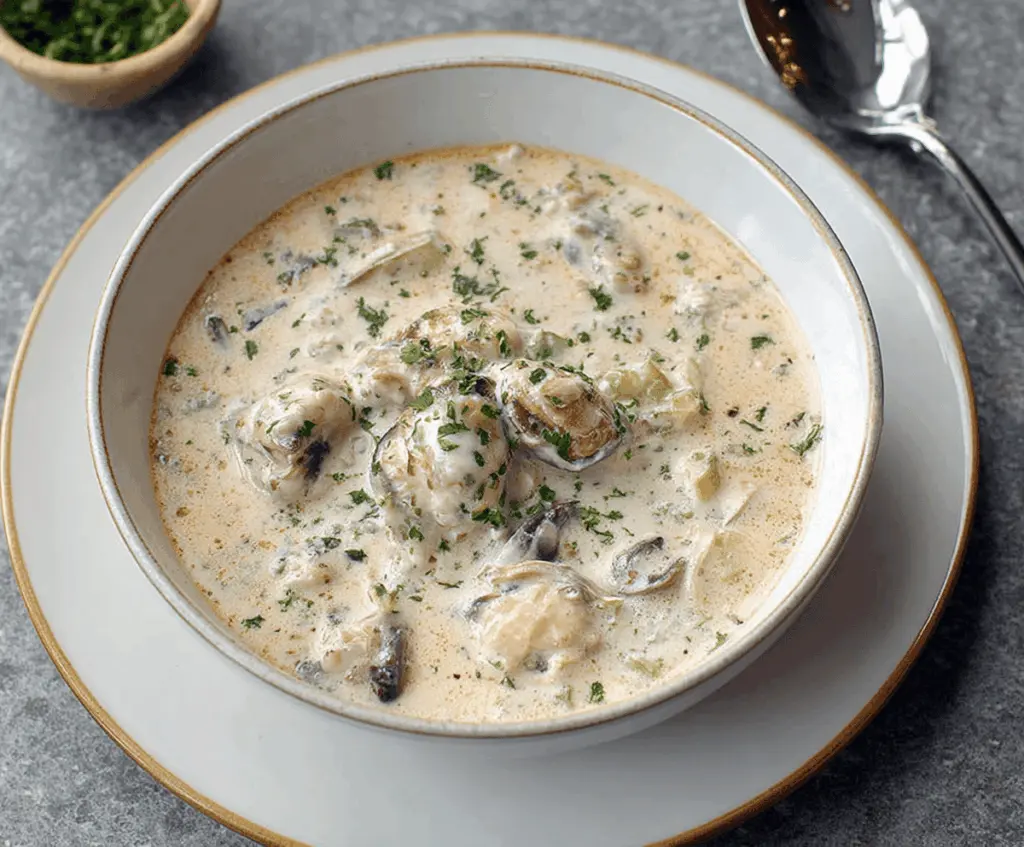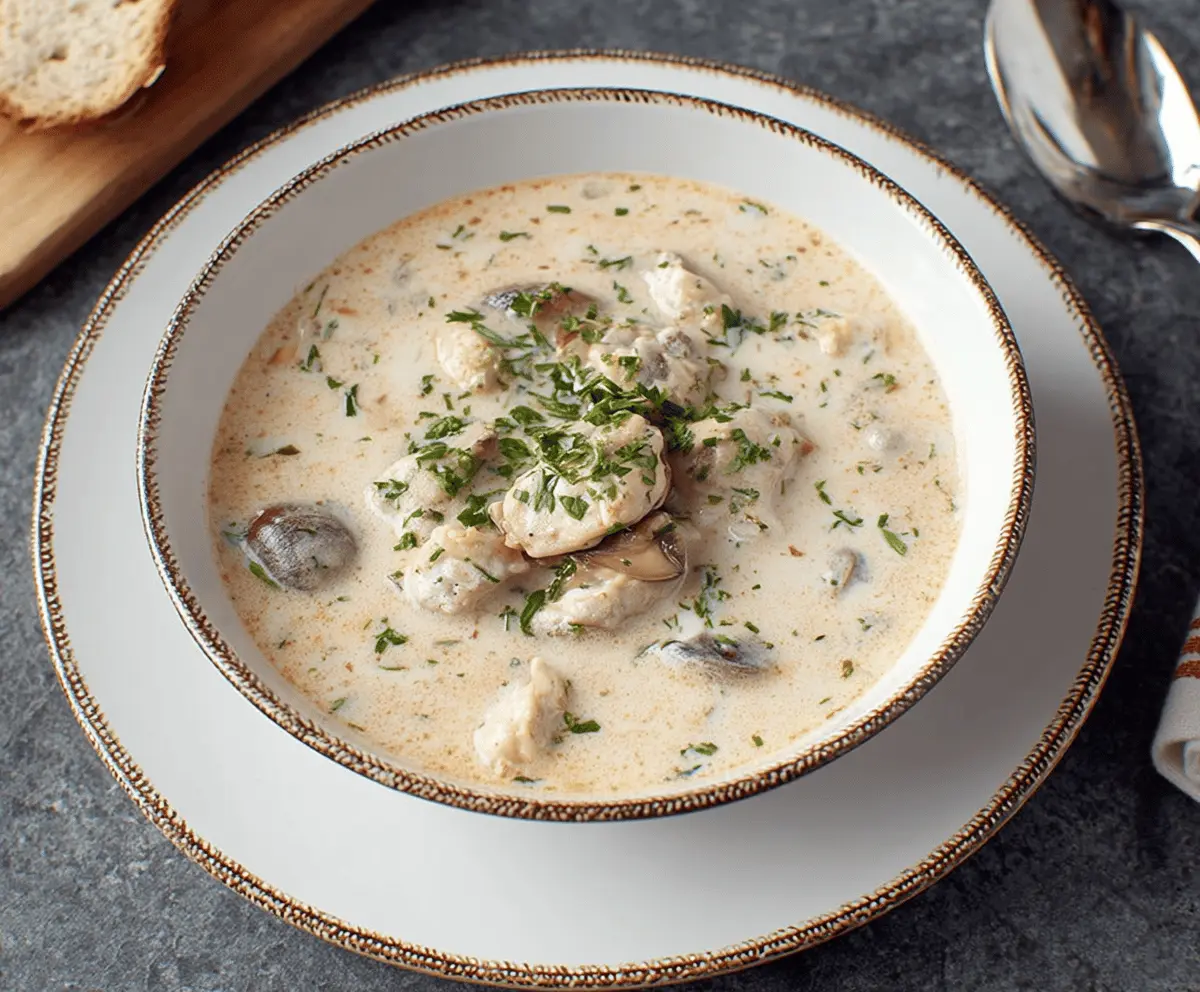
Oyster Stew Recipe
Oyster Stew is a simple, comforting dish that’s all about the fresh, tender oysters and a creamy, buttery broth. It’s a classic recipe that brings out the gentle briny flavor…
Tip: save now, make later.
Oyster Stew is a simple, comforting dish that’s all about the fresh, tender oysters and a creamy, buttery broth. It’s a classic recipe that brings out the gentle briny flavor of oysters without overpowering them, making it a favorite especially in cooler weather. The smooth texture of the stew combined with a hint of pepper and a touch of cream creates a warm and satisfying bowl.
I love making oyster stew when I want something quick but special. The recipe is pretty straightforward, and it really shines with fresh oysters, which give it that fresh-from-the-sea taste. One of my favorite tips is to add the oysters at the very end and cook them just until they curl up, so they stay tender and don’t get rubbery. It feels like a little kitchen magic every time.
This stew is great on its own or served with crusty bread for dipping. I often make it for a cozy dinner at home or when friends come over, and it never fails to get compliments. There’s something really comforting about a warm bowl of oyster stew that reminds me of quiet evenings and good company.
Key Ingredients & Substitutions
Fresh Shucked Oysters: Fresh oysters really make this stew special. If you can’t find fresh, canned oysters work in a pinch but try to drain them well so the stew doesn’t get watery.
Milk or Half and Half: Whole milk gives a lighter stew, while half and half adds extra creaminess. You can also use heavy cream if you want it richer, or a milk alternative like oat milk for a dairy-free twist, but the flavor will change slightly.
Butter: Butter adds richness and helps soften the veggies. Unsalted is best so you control the salt levels. You can substitute olive oil for a lighter, dairy-free option.
Onion and Celery: These add subtle flavors and a bit of crunch. If you don’t have celery, a pinch of celery salt or finely diced green bell pepper can add a similar flavor.
How Do You Cook Oysters Without Making Them Tough?
Oysters cook quickly and can become rubbery if overcooked, so timing is key.
- Heat the milk gently, but don’t let it boil—that can toughen the oysters.
- Add oysters at the end and cook just 3-4 minutes until they curl at the edges.
- Remove from heat promptly to keep them tender and juicy.
This way, the oysters stay soft and tender, making your stew smooth and tasty.
Equipment You’ll Need
- Large saucepan – perfect for cooking the stew evenly and gently warming the milk without boiling.
- Wooden spoon – great for stirring the stew gently without scratching your pan.
- Fine mesh strainer (optional) – useful if you want to strain the oyster liquor to remove any bits.
- Measuring cups and spoons – to get the right amounts of milk, butter, and seasoning.
Flavor Variations & Add-Ins
- Add a dash of hot sauce or cayenne pepper for a little heat that lifts the creaminess.
- Include chopped fresh thyme or dill for an herbal twist that pairs well with seafood.
- Stir in cooked bacon bits for a smoky crunch that contrasts nicely with the creamy stew.
- Replace celery with finely diced fennel for a slightly sweet, anise-like flavor.
How to Make Oyster Stew
Ingredients You’ll Need:
Main Ingredients:
- 2 pints fresh shucked oysters with their liquor
- 4 cups whole milk or half and half
- 4 tablespoons unsalted butter
- 1 small onion, finely diced or sliced
- 1 stalk celery, finely diced
- Salt to taste
- Freshly ground black pepper to taste
- Fresh parsley, chopped (for garnish)
Time Needed:
This recipe takes about 10 minutes of active prep and cooking time. It’s a quick stew that comes together fast once you start sautéing and warming the milk, so it’s perfect for a cozy meal any day.
Step-by-Step Instructions:
1. Sauté the Vegetables:
In a large saucepan over medium heat, melt the butter. Add the finely diced onion and celery. Cook gently, stirring occasionally, until they soften and turn translucent, about 5 minutes.
2. Warm the Milk:
Pour the milk or half and half into the saucepan with the vegetables. Heat the mixture gently until warm but do not let it boil, as boiling can toughen the oysters.
3. Cook the Oysters:
Add the oysters with their liquor to the warm milk mixture. Cook just until the oysters curl around the edges and are heated through—this usually takes about 3 to 4 minutes. Avoid boiling the stew to keep the oysters tender.
4. Season and Serve:
Season the stew with salt and freshly ground black pepper to your taste. Serve the oyster stew hot, garnished with chopped fresh parsley. For a traditional touch, you can serve it with crusty bread or oyster crackers on the side.
Can I Use Frozen Oysters for Oyster Stew?
Yes, you can use frozen oysters, but be sure to thaw them completely in the refrigerator overnight before cooking. Drain any excess liquid to avoid watering down the stew and add the oysters at the end to prevent overcooking.
Can I Make Oyster Stew Ahead of Time?
Oyster stew is best enjoyed fresh because the oysters can become tough when reheated. If you need to prep ahead, cook the base (milk, butter, and vegetables) and refrigerate separately, then gently reheat and add fresh oysters just before serving.
How Should I Store Leftover Oyster Stew?
Store leftovers in an airtight container in the refrigerator and consume within 1-2 days. When reheating, warm gently on the stove without boiling to keep the oysters tender.
What Can I Serve with Oyster Stew?
Oyster stew is delicious on its own or served with crusty bread, oyster crackers, or a simple green salad to round out the meal.

